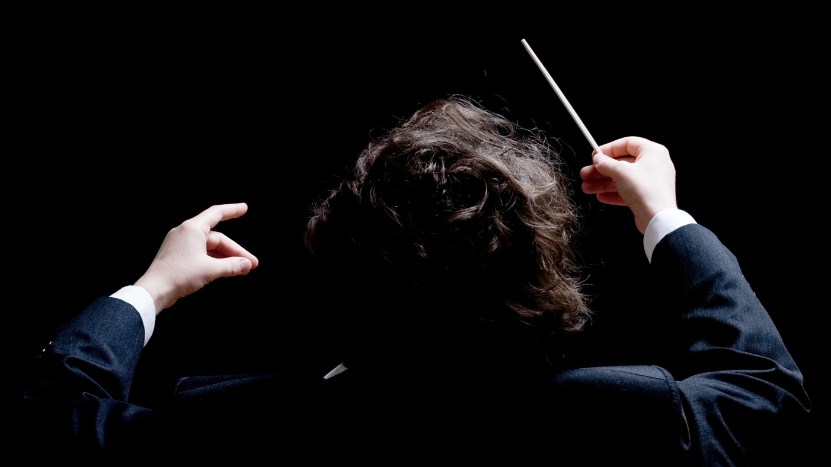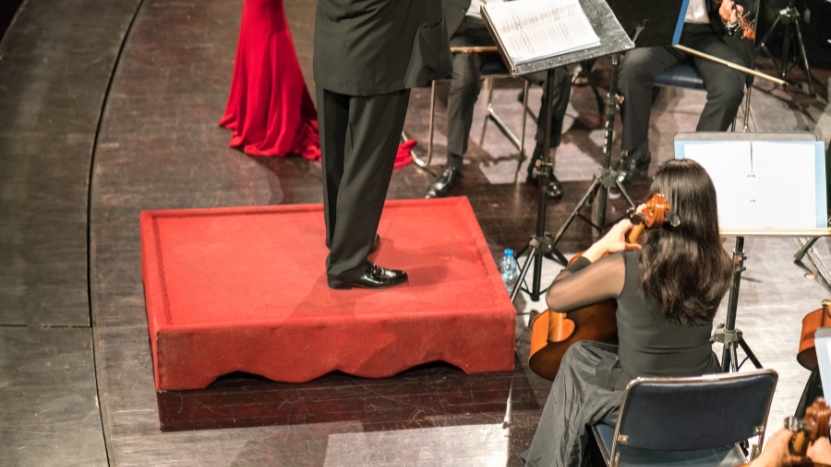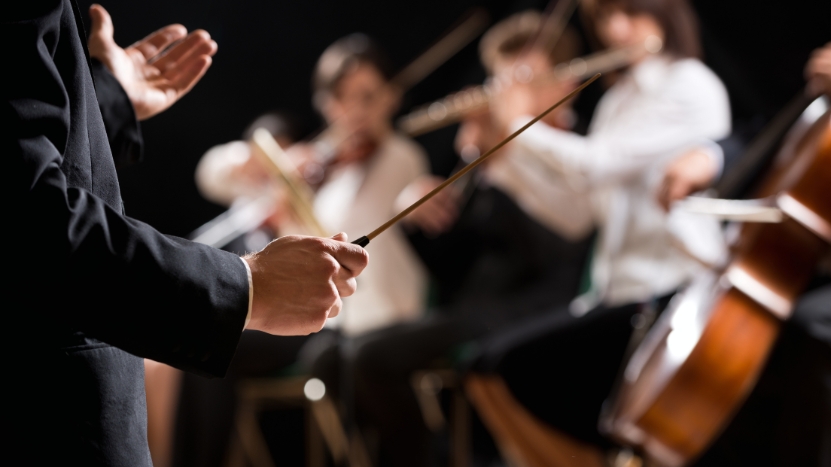An orchestra conductor provides real-time coordination, interpretation, and emotional direction during a performance – serving as the central guide who unifies tempo, dynamics, and expression for dozens of musicians playing simultaneously.
Without the conductor’s leadership, even highly skilled players would struggle to maintain cohesion, especially in complex works.
Many people attending a symphony for the first time have the same question: why is that person on stage waving a stick, seemingly dancing in front of the orchestra? If the musicians already have the sheet music and know what to play, isn’t the conductor just for show?
The truth is far more compelling. Conductors are not ornamental – they are essential. They shape the performance in real-time, navigating tempo changes, cueing entrances, managing dynamics, and holding the ensemble together like a human metronome with interpretive insight.
When dozens of instrumentalists are reading different parts of a score that might include multiple tempo markings, changes in key, layered rhythms, and emotional swells, a unifying figure is not optional – it’s indispensable.
The Conductor’s Real-Time Responsibilities

Role Component
Description
Timekeeping
Sets and maintains tempo using hand and baton movements.
Cueing
Signals specific musicians or sections when to enter, especially after long rests.
Dynamic Control
Guides volume shifts – from delicate pianissimo to thunderous fortissimo.
Artistic Interpretation
Bring the musical score to life with expressive phrasing, timing, and emotional shaping.
Crisis Management
Adjusts on the fly if mistakes happen, syncing the ensemble back together seamlessly.
Communication Hub
Acts as a visual and emotional anchor for the entire orchestra during performance.
During a live concert, the conductor’s beat patterns (commonly 2, 3, or 4 beat cycles depending on the meter) are clear indicators of rhythm and tempo. But that’s just the surface.
The subtle tilt of a hand might suggest a rubato (flexible tempo), while an intense gaze toward the violins can prepare them for a sudden burst of sound.
Behind the Baton: How Conductors Prepare Before the Performance
Many audience members are unaware that the conductor’s most important work happens before the concert even begins.
Preparation involves deep analysis of the score, rehearsal planning, and strategic interpretation choices.
Preparation Task
Why It Matters
Score Study
A conductor must understand every note for every instrument and how they interrelate. This includes harmony, phrasing, rhythm, and historical context.
Interpretation Decisions
Conductors determine pacing, emotion, and character – choices that can dramatically alter the feel of a performance.
Rehearsal Strategy
Time is limited, so knowing where to focus in rehearsal (complex passages, transitions, ensemble balance) is critical.
Learning the Ensemble
Conductors must understand the strengths and tendencies of their specific players – every orchestra is different.
When the conductor steps onto the podium, they’ve already mentally rehearsed the performance many times, sometimes spending hundreds of hours studying the score.
Their gestures aren’t random – they are distilled from deep understanding and planning.
Real-Time Communication: How Conductors Guide the Ensemble
Imagine playing a solo instrument. Now imagine doing it while trying to match 80 other people in perfect rhythm, harmony, and expression – without speaking.
That’s the environment orchestral musicians navigate, and the conductor is the one who holds it all together.
Key forms of live communication include:
- Facial Expression: Subtle cues like a raised eyebrow or smile guide mood and energy.
- Left Hand Gestures: Often used to signal phrasing, volume, or specific expressive intent.
- Eye Contact: Helps musicians stay engaged, especially during solos or transitions. In concertos, where a soloist must weave in and out of the orchestral fabric, that connection becomes even more critical.
- Body Language: Larger motions can energize climaxes, while stillness can evoke intimacy.
For musicians, watching the conductor is like reading a living map. And when done well, it’s not distracting – it’s grounding.
Do Musicians Always Watch the Conductor?
The answer varies depending on the piece and the section of the orchestra. In repetitive or rhythmically steady sections, musicians rely more on their internal pulse and each other.
But in transitional sections – where tempo or dynamics change – or when re-entering after silence, eyes dart to the podium.
Sections most reliant on the conductor:
Section
Why the Conductor Is Crucial
Strings
Responsible for melodic shaping; follows phrasing and bowing cues.
Percussion
Must align with precise entrances; timing is critical.
Brass/Woodwinds
Need exact cues, especially during exposed or syncopated parts.
Soloists
Rely on the conductor for expressive coordination with the ensemble.
But What Happens If the Conductor Makes a Mistake?

Conductors are human, too. A missed cue or a misjudged tempo can cause chaos – unless the orchestra is highly experienced.
In fact, in professional settings, the musicians can often hold things together for a while if the conductor falters. But over time, divergence grows without a unifying leader. Especially in rhythmically complex or atonal works, the conductor becomes vital to survival.
Experienced conductors recover by re-establishing the beat quickly, making assertive eye contact, and providing unmistakable cues to get things back on track.
Why Do Some Orchestras Perform Without Conductors?
There are chamber orchestras and smaller ensembles that choose to perform without a conductor. In these cases, leadership is often shared – usually, the first violinist (concertmaster) plays a guiding role.
This model works well for tightly rehearsed groups and smaller pieces but becomes unwieldy with larger, more complex scores. In a full symphonic repertoire, the absence of a conductor is rare because the coordination demands are simply too high.
What Separates a Good Conductor from a Great One?
View this post on Instagram
Beyond technique and timing, truly great conductors inspire. Their presence lifts the emotional stakes of a performance.
Think Leonard Bernstein, who fused charisma with intellect, or Gustavo Dudamel, whose energy electrifies both musicians and audiences. Great conductors know how to shape sound like sculptors, coaxing color and depth from every section.
Traits of Great Conductors
Trait
Description
Charismatic Leadership
Inspires trust and unity without ego.
Interpretive Depth
Brings new insights to familiar pieces.
Expressive Clarity
Uses gestures that are readable, musical, and full of purpose.
Listening Ability
Adapts and responds to how the ensemble sounds in real-time.
Emotional Presence
Creates performances that move audiences deeply.
Final Thought
@almadeutscherYou asked and so I’ll answer 🙂
A conductor may not produce a single sound during the concert, but their influence is everywhere. Their gestures shape tempo, their presence fuels expression and their preparation sets the stage for every note the audience hears.
In that sense, the conductor is both navigator and translator – taking the composer’s score and transforming it into a shared, living experience.
So the next time you’re at the symphony, watch the podium. You’re not just seeing someone wave a baton—you’re watching the heartbeat of the music itself.

